Best Mattress for Heavy Sleepers 2024
Trust Zoma for expert insights on sleep wellness. Our dedicated team, including sleep science coaches, engineers, and product evaluators, meticulously investigates mattresses using our athlete-informed product methodology. We provide precise and trustworthy articles, continually updating content with the latest scientific breakthroughs. Count on us for top-rated, personally reviewed mattresses that prioritize comfort and performance, elevating your rest to its highest potential.
1. Best Overall Mattress for Heavy Sleepers – Zoma Boost 2. Best Luxury Mattress for Heavy Sleepers – Saatva HD 3. Best Cooling Mattress for Heavy Sleepers – Big Fig 4. Best Extra Firm Mattress for Heavy Sleepers – Titan Plus 5. Most Comfortable Mattress for Heavy Sleepers – Helix Plus 6. Best Mattress for Backpain for Heavy Sleepers – Winkbed Plus 7. Best Mattress for Side Sleepers – Nolah Evo Comfort+ 8. Best Mattress for Hip Pain for Heavy Sleepers – Bear Elite Hybrid
There is no one mattress that’s right for everyone, as people have different sleep needs, sleep styles and naturally, different bodies. And those who are heavier sleepers may feel intimidated into believing that finding a mattress that can fully support them is an arduous task. But your body type shouldn’t keep you from sleeping on a high-quality bed. And that is why we’ve put together this guide to finding the best mattresses on the market for heavier people. Below is a list of best mattresses for Heavy Sleepers: When testing the mattresses for heavy sleepers, the one mattress that exceeded our experts’ expectations in every aspect was the Zoma Boost. The Zoma Boost mattress is a 15″ hybrid with graphite-infused memory foam on top of a layer of pocketed support coil base. Our reviewers found it to be outstanding in various aspects, including cooling properties, rapid response time, and exceptional pressure relief. We found this bed to be perfect for heavy sleepers who do not want to change their bed every few months due to sinkage. Zoma Boost has excellent cooling technology, which provides comfort to heavy sleepers. People who get sweaty in different body areas will find this mattress soothing. Also, our reviewers liked the cooling cover containing phase change materials. It helps in staying cooler for longer. We picked this mattress because of its sinkage. This mattress displays a moderate level of pressure point sinkage. Despite its contouring hug, the mattress maintains a balanced support around the body, offering an ideal blend of comfort and pressure relief. Zoma Boost is made of graphite-infused memory foam, which will keep your back supported without putting pressure on the shoulders or hips. The Zoma company has combined two features – gel memory foam and innerspring coils to produce an ideal product that provides relief and support to individuals and eliminates back problems for the individuals. The mattress has a soft cover, ideal for people with back pain. Usually, heavy sleepers have a tough time falling asleep and spend a long time turning on the bed. This mattress suits such people because it keeps the temperature moderate, and the soft cover and strong edge point give good support. During testing, we found that Saatva HD stands out as a premium mattress tailored specifically for individuals weighing over 230 pounds, a rarity in the luxury mattress market. Boasting high-quality materials and impeccable craftsmanship, the HD surpasses traditional innerspring while retaining the sturdy support and signature bounce characteristic of this mattress type. We tested HD’s efficacy for heavy sleepers who slept in all poses. For side sleepers, this mattress is extra-special because of the spinal alignment that it provides. The moderate cushioning provided by the top foam layer effectively alleviates pressure in the shoulders and hips without excessive contouring. Back and stomach sleepers in this weight category experienced minimal sinkage, which means the mattress will last longer. The Saatva HD features Talalay latex encased in a luxurious Euro-top, segmented into five firmness zones to provide targeted support. The gel-infused memory foam layer conforms to the body while maintaining a dense composition to prevent excessive sinking. Transitional polyfoam acts as a buffer between the body and the support core. The zoned latex and thick, low-gauge offset coils give the body sudden relief from soreness and tension in the muscles. Saatva HD has high ratings from our team because of the firmness and contouring against every curve. The neck muscles relax, and that results in quick sleep. Big Fig is designed sturdily to support heavier sleepers and its firmness supports the body to relieve pressure and balance weight distribution. Our team has included it in our list of the best mattresses for heavy sleepers because they believe sleepers with spinal issues can relax on this mattress as it has strong edge support and includes Thermogel cooling technology, which is a big positive for heavy sleepers. Big Fig is among the list entries because it offers extra support for heavier people. Our reviewers liked the support of the firm mattress, which is due to the layers of cover, foam and coil system encased in a strong edge support. The mattress feels soft, but is firm enough to support heavy sleepers with motion isolation. Big Fig has several layers of material that make it an excellent fit for heavy sleepers. The Thermogel layer is over the perforated gel-infused latex foam, and then there are three layers of high-density poly foam. The individually wrapped coils are over the tufted layer, which gives the mattress a firm and effective feel. Big Fig is soft to the touch, and the Thermogel technology ensures that heavy sleepers stay moisture-free all night. The body temperature remains constant and the mattress gives a soothing effect against the body. The cover contours along the curves, giving sleepers a good night’s sleep by distributing the weight off hips, shoulders, and spine. On our list of best mattresses for heavy sleepers, the mattress that has made it to the list is The Titan Plus. Titan Plus is a blend of surface contouring and overall stability. With multiple foam layers that gently cradle heavy sleepers, and evenly distribute weight. This mattress is excellent for alleviating pressure along the spine and is celebrated for its excellent support and minimal sinking over time. Side sleepers weighing over 230 pounds find this mattress to be an exceptional fit for their sleep needs. The medium-firm feel and deep foam layers provide sturdy cushioning. Sleepers who want some help with critical pressure points like hips and shoulders will benefit from this mattress. According to our team’s review, there was no sinkage, which made this mattress a part of this list. Titan Plus has a Euro-top cushion infused with memory foam, quilted into the cover to offer a touch of plushness on the surface. The comfort layer comprises proprietary TitanFlex foam, designed to provide the responsiveness of latex, providing a subtle bounce when entering the bed. A polyfoam transitional layer is a buffer between your body and the support core, offering additional cushioning. Pocketed coils atop high-density base foam deliver remarkable overall stability, reinforcing the mattress’s springy feel without compromising motion transfer. Back and stomach sleepers will agree that Titan Plus is an excellent fit for heavy sleepers who have back issues. As soon as you lie down, the soft cover and the coil layer ensure that your body contours are supported. The mattress is for people within the 130 to 230-pound weight. One of the standout features of Titan Plus is its exceptional cooling properties. The breathable foam layers coupled with consistent airflow through the coil layer ensured minimal heat buildup during our temperature control evaluations. The manufacturer claims that this mattress has been designed with heavier sleepers in mind. This firm luxury hybrid delivers a comfortable experience to its intended audience with dense foam over thick coils. Our mattress reviewing team claimed that this is a tried-and-true combination for people over 230 pounds who tend to sink excessively on softer mattresses with less robust support systems. The Helix Plus was tried on sleepers who were over 230 pounds, and each of them gave positive reviews. This mattress is good for all sleeping positions, and if you sleep on your back or stomach, it will not strain your spine. We love this mattress because it has the ability to cushion and support the bodies in equal measure. Our team found that the Helix Plus’ comfort system consists of three foam layers. High-density memory foam cushions the surface, contouring your body closely and evenly to distribute your weight, followed by polyfoam and memory foam layers that provide additional cushioning while keeping you on an even plane. The support core contains pocketed coils, extra perimeter reinforcement, and a high-density foam base layer. The cover is composed of breathable Tencel fabric. The manufacturer even allows you to order a GlacioTex phase change cover for an additional fee that dissipates body heat on contact. Due to the thick foam layers, we found the Helix Plus performed well in areas where hybrid models tend to fall short. Sleepers will notice minimal transfer when two people are lying side by side. The excellent edge support and stress relief for pressure relief will last for many years. The mattress felt responsive enough to move across the surface without feeling stuck. While testing the WinkBed Plus, we found that it is a premium hybrid mattress with four distinct firmness levels. The WinkBed is specifically engineered for individuals with greater body weight. It offers zoned comfort and support layers, which offer reinforced support from head to toe, with notable resistance around the torso and hips, areas prone to bearing more weight. Our reviewers tested the WinkBed and it suited side and back sleepers equally. Many people over the weight of 230 pounds sleep on their side or their stomach because their spine hurts due to the pain of bearing weight. However, with WinkBed’s excellent three-zone coil support, and the latex comfort layer, sleepers feel the pushback. The WinkBed Plus features a Euro-top cushion enhanced with adaptive foam, providing subtle surface cushioning. The zoned latex comfort layer swiftly responds to pressure, maintaining an even plane and offering firmer, more supportive reinforcement beneath the chest, stomach, and hips. The support core mirrors this approach, with thicker springs strategically positioned beneath the midsection for added pushback. A breathable, moisture-wicking Tencel cover encases the mattress, enhancing overall comfort. WinkBed Plus is comfortable due to the soft cover, and it provides extra support due to the three-zone coil system, which can balance stress in the body. Heavy sleepers feel light and can sleep well because their bodies are not working on lifting the extra weight. The temperature control and robust edge support were standout features during our reviewing sessions. The Nolah Evolution Plus strikes the right balance of cushioning and support. According to our reviewers, the Nolah Evolution is an expert in neck and back support for side sleepers. Moreover, the mattress comes in various thicknesses, although the thickest is most suitable for heavy sleepers. The deep foam layers in the comfort system and coils are engineered to provide reinforced support in areas where weight is concentrated. We selected this mattress because our heavier side sleepers were happy with the feel of the mattress. Moreover, it was equally comfortable for light sleepers. Some reviewers who found it hard to sleep straight due to their weight selected this mattress because it provides neck support and aligns the spine. The open-cell composition of each foam layer combats heat buildup, while ample airflow is facilitated by the coils within the interior. Additionally, the cover, crafted from breathable organic cotton interwoven with cooling ArcticTex fibers, further enhances cooling properties. Another feature is motion isolation for couples or co-sleepers. The pressure relief is due to the coil system layer. The Evolution Hybrid features a Euro-top comprising four polyfoam layers, with the top two layers offering adaptability and the underlying pair providing density and firmness. Upon lying on the Nolah Evolution Hybrid, the initial plush sensation is followed by a gentle pushback as the body settles. This adaptable, sink-free cradling is attributed to the progressively denser foam layers. Side sleepers weighing at least 230 pounds admire this mattress because it aligns the spine. Temperature regulation is also another remarkable feature discovered by our mattress reviewing team. Bear is renowned as an online mattress and bedding brand that integrates Celliant fabric into its products, a material engineered for temperature regulation. Among its offerings, the Bear Elite Hybrid shines with its well-balanced design and robust construction. Our team claims that Bear Elite Hybrid ensures adequate spinal cushioning to relieve pressure without excessive sinking, thus making it a perfect mattress for all types of sleepers. We selected Bear Elite because it is available in three firmness options: medium, medium firm, and firm. Each model features a pocketed coil system providing substantial support. The coils offer resilient pushback along the edges, instilling confidence in those who utilize the perimeter of their mattress or encounter difficulty getting in and out of bed. The Bear Elite Hybrid comprises copper-infused memory foam beneath a Euro-top, augmented by a polyfoam transitional layer. Notably, the cover incorporates Celliant and phase change material, engineered to convert body heat into infrared energy and transmit it back into the body through the skin. This innovative process aims to regulate temperature and aid in physical recovery throughout the night, making the Bear Elite Hybrid particularly suitable for athletes, active individuals, and those with physically demanding occupations. Back and side sleepers over 230 pounds in weight favor the medium and medium firm models, while stomach sleepers feel better about the firm option for its enhanced support. We noticed that the layers provide good support for all sleeping poses, and the spine feels relieved due to the motion isolation and pressure distribution. It can be intimidating shopping for the best mattress, with the wide selection that’s available on the market. To truly know what is the right mattress for you, you’ll need to have a thorough knowledge of all that you should consider as you look. Your typical sleeping position is always something to have in the forefront of your mind as you shop for your perfect mattress, as it will majorly influence what firmness of a mattress is right for you. Take note of the positions you fall asleep in and the positions you wake up in. Side sleeping is the most common sleep position, and maybe the best position to prevent back pain. But as a side sleeper, your hips and shoulders can take a lot on your body weight as you sleep. You’ll want a medium or soft mattress as a side sleeper. If the mattress is too soft, and your hips and shoulders may sink too far into it. Too firm, you may spend more of the night tossing and turning from your arm falling asleep, and wake up in the morning with hip pain. Heavier sleepers may prefer to sleep on their back, as it distributes your weight more evenly. When looking for a mattress, think about how it will support and care for your spine’s natural alignment. Back sleepers should look for a medium-firm to a firm mattress. Too soft will have you sinking too deeply into the mattress, leading to pain. Too firm, and the curve of your lower back will lack support, another path to pain. If you’re a stomach sleeper, we recommend changing up your sleep style if you can. It’s seen as the unhealthiest sleep position because of the damage it may do to your spine. As you sleep on your stomach, your center of gravity moves to your midsection. Your stomach may then sink into the mattress and overextend your spine, if your mattress isn’t firm enough. If switching to a new sleeping style isn’t feasible, then a firm mattress can help to prevent harm from sleeping on your stomach. A majority of people are combination sleepers, which means they change positions throughout the night. If you are one, you’ll want a mattress that’s a good balance between the sleeping styles you shift between. There are four mattresses you’ll want to keep in mind as you shop: memory foam, latex, innerspring and hybrid. While there are a few other types on the market, these are the main ones you’ll want to concern yourself with. Memory foam takes its inspiration from NASA technology and has grown in popularity through the idea of a bed-in-a-box, where a company can compress and roll up a mattress for easy home delivery. The appeal of memory foam is in how well it takes a sleeper’s weight. The material is made from polyurethane with additional viscosity for better responsiveness. Bodyweight is dispersed and the foam contours to the sleeper’s body without any resistance or pressure. This relieves pressure points across the body and provides lower back support. You may have been told that as a heavier person, you shouldn’t use a memory foam mattress. That is not true, you simply have to be a smart shopper when it comes to selecting a memory foam mattress, looking at the layers, thickness, and support each one offers. It may take time, research, and some trial and error, but it will be worth it to wake up without aches, soreness, or back pain thanks to the foam’s pressure relief. Memory foam also absorbs and isolates movement, ideal for those sharing a bed with a partner. The bed will prevent your partner’s movement from disturbing your sleep. Different densities of memory foam are available to provide the support needed for a wide variety of sleepers. The foam that makes up most memory foam is heat activated, which can lead to an uncomfortable overheating sensation that will disturb your rest. Some companies combat this by using cooling gels in their foam mixture, others copper or graphite. Others such as Amerisleep use plant-derived oils and extracts. Not all memory foams are made the same. When you’re looking at a foam bed, check if the density is listed for each layer. The density refers more to the support a bed offers than to its inherent firmness. A high-density bed should offer more support than a low-density bed. The top layer of the mattress should be the densest layer, as that will be where support is most needed. Latex mattresses are made from natural or synthetic rubber. It allows for a more breathable material than basic memory foam and has more of a bounce to it, while memory foam is a more cradling material. There are two processes that are used to create the latex, Dunlop and Talalay. Dunlop is the more common and uses less energy to make the latex. Talalay has a few more steps to the process, so it takes more energy to create it. Latex is strong and durable thanks to its structure, increasing its average lifespan and ensuring that long-term use won’t leave the deep body impressions you may find in other mattress types. But because of latex’s natural density, its mattresses can be on the firmer side. Some brands counteract this with plusher or softer top layers. If you’re considering a latex bed, we recommend choosing one with a natural latex rather than one with a synthetic blend. However, if you have a latex allergy, you should avoid these types of mattresses altogether. The popularity of innerspring mattresses is on the decline, with other mattress types on the market that seek to provide a better’s night sleep than the original mattress. But there’s still quality innerspring mattresses being manufactured. High coil counts with enough padding can offer the firmness needed to sooth moderate pain in the neck, shoulders, back, hips and your legs. We do not recommend any innerspring mattress with a coil count that’s lower than 340, as they may not provide sufficient support. Innerspring mattresses typically lack customization options. The fact that it can’t mold to your body as well as other mattress types may mean a lack of critical support needed to alleviate or prevent any chronic pain. A hybrid mattress is, as the name implies, a sort of a mixed mattress, taking foam layers and pairing them with the coiled springs of an innerspring mattress. Often the layers are memory foam or latex foam, but sometimes you’ll find a mix of the two. Hybrids are often some of the more expensive mattresses on the market, as they are a combination of high-quality materials. As a heavier person, you need to consider how your bodyweight will be distributed around the mattress while you sleep. And you don’t want to wake up in the morning with any soreness or pain because of a mattress that could not provide you with adequate support. For a good night’s sleep, you’ll likely want a mattress that’s on the thicker side. Why a thicker mattress? A general rule of thumb is that a taller, thicker mattress offers more support and will be better equipped to prevent you from unneeded sinking into it. As you lie down and sleep, your shoulders, hips, and stomach may take too much pressure from your body weight falling into those areas. Extra support can help provide extra cushion for these spots, preventing any aches or injury and ensuring you get a better night’s sleep. So where to start? Mattresses can come in a wide range of thicknesses, from 5 inches thin to 20 inches thick, so what should you get? That can depend on the exact mattress type and the construction and combination of its layers. But ideally, look for a mattress that’s at least 12 inches thick, and it would probably not be a good idea to go for anything less than 10 inches. It can depend on the construction of the mattress, though. Some have layers specifically designed for more support, which can allow you to have a thinner mattress suitable for a heavier person. And take a close look at the first layer’s height. A thicker comfort layer will allow your body more room to comfortably sink into the mattress. It’s all relative when it comes to the firmness of a mattress. Think of a reversed Goldilocks and the Three Bears, with three people and one mattress. One may say the mattress is too soft, one may say it’s too firm, and the last could declare it to be just right. That said, we’ve discussed how sleeping styles can play a part in what firmness is right for you. And as a heavier sleeper, a mattress that’s designed to be soft may not provide the needed support for your body weight. A firmer mattress is more likely to be durable enough to last you several years and still deliver the support you need to sleep well. For a heavier sleeper that likes a softer mattress, try a medium-firm for a good mix of solid support and plush cushioning. Edge support is used to describe how well a mattress keeps you up when you’re lying down near or sitting upon the mattress’s side. A lack of it means you may roll off your mattress or be unsupported if you sleep near the edge. A larger sleeper will want a mattress constructed with enhanced edge support, for a mattress that’s sturdy throughout and provides maximum surface area. Thanks to the bed-in-a-box movement, sleep trials are everywhere when it comes to today’s mattresses. Typically, they’re offered for 90 to 120 nights. A nice long stretch of time is needed to determine if a mattress is the right fit for you, as the time it takes for you to fully acclimate to a new mattress is about a month. Don’t set your opinion in stone after only the first few nights, but don’t feel like you’re settling when it comes to your mattress either. Warranties are often factored into the mattress’s price, so a lengthy warranty can be worth it to know you won’t have to instead spend the money on a new mattress too soon. And never buy a mattress that lacks a warranty. When buying a mattress you’re buying something that’s meant to last you years and years, and if a company isn’t willing to guarantee you those years against defects such as sagging, then what does that say about its faith in its product? Just a quick definition, a foundation is a wooden or metal frame with a sturdy, flat board attached to the top. This is to be placed on the bed frame between the headboard and the footboard or used on its own, to give your mattress even support. It is not the same thing as a box spring. Ultimately, the best support system for your bed will depend on the mattress type you use. For all-foam beds, particularly memory foam, a box spring is a big no-no. A traditional box spring can shorten your foam mattress’s lifespan by damaging its support and consistency. Using a box spring can even void the warranty on your mattress. Instead consider adjustable bed frames, foundations, and platform beds for a foam mattress. Hybrid and innerspring mattresses allow for a bit more flexibility, typically pairing well with either a box spring or a foundation. They also pair well with most bed frames. Much like you would for a mattress, check what the listed weight capacity for a foundation is as well, to be sure it can provide the support needed. Check also its trial period and its warranty. Many have limited warranties that last between three to 10 years. Mattresses can run the price gamut from less than $300 to more than $3000. With such a wide selection, it can make it intimidating to know whether or not you’re buying a quality product. The answer, not to sound like a cop-out, depends on what exactly you want and need out of a mattress. To start, you’ll want to approach your purchase as an investment you’re making— a mattress is meant to last you for years to come. But you needn’t buy the most expensive mattress available to ensure you have a quality bed. In fact, many people can find a top-rated mattress for under $1000. And when you buy a mattress, you’re buying not just the physical mattress but also a guarantee of quality with its sleep trial and limited warranty. Think about what each mattress comes with when you compare prices, as you’ll want to be confident that a bed is right for you instead of settling for a mattress that’s not a perfect fit. Consider also what else you might need to buy besides a mattress. If you’ve used a boxspring with a previous innerspring mattress, but now you want to purchase a memory foam mattress, then you’ll likely need to buy a foundation as well. Factor that into your budget as you shop. When you’re searching for a mattress that’s suitable for a heavy person, always look for a listed weight limit. A good queen mattress should be able to hold between 300 and 500 pounds per person. Reach out to the company if no listed weight limit is immediately obvious, and consider it a warning sign if there’s no easy way to contact them or your question goes unanswered after a lengthy period of time. And take the time to skim through the customer reviews for a mattress as well. See what customers are saying about a mattress’s firmness— if it alleviated or added to any back pain or other body aches, or if there’s a noticeable new mattress smell or not. And read any stories about how the company handled any defects. Consider what’s important to you in a mattress as you read along, and if what is being said lines up with what you need. Our aim in compiling this guide is to leave you with the knowledge needed to browse the mattress market on your own for the bed that’s the absolute right fit for you. Remember that material, type, edge support, thickness, your sleep style and the reviews of other customers are all factors other than price to consider as you shop. And please feel free to reach out to us with any comments or questions in the comment section below! This article is for informational purposes and should not replace advice from your doctor or other medical professional. Sarah Anderson is a sleep, health, and wellness writer and product reviewer. She has written articles on changing and improving your sleep schedule, choosing the right mattress for chronic pain conditions, and finding the best pillow for you. Sarah Anderson has her Bachelor of Arts degree from Arizona State University in Journalism and Mass Communications. Prior to working for Zoma, she wrote for a variety of news publications. Sarah's work has been featured on Bustle, PureWow, and other publications.Buying Guide for Best Mattress for Heavy Sleepers
Top Mattresses for Heavy Sleepers
Best Overall Mattress for Heavy Sleepers
1. Zoma Boost

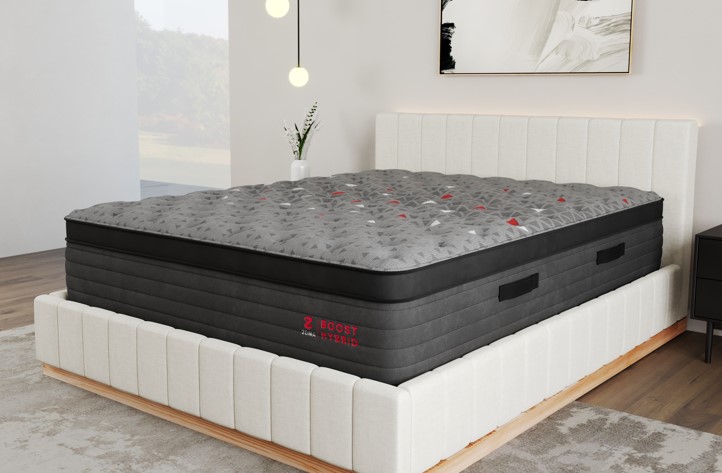
Best Luxury Mattress for Heavy Sleepers
2. Saatva HD
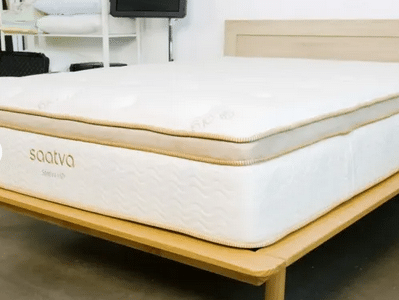
Best Cooling Mattress for Side Sleepers
3. Big Fig
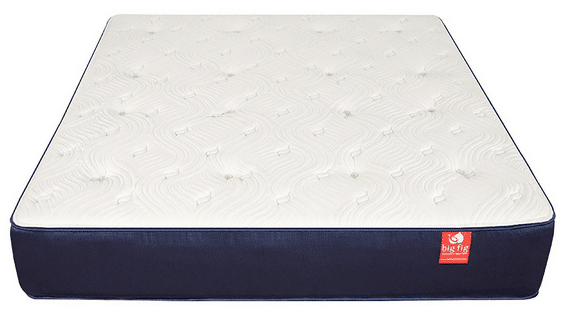
Best Extra Firm Mattress for Heavy Sleepers
4. Titan Plus
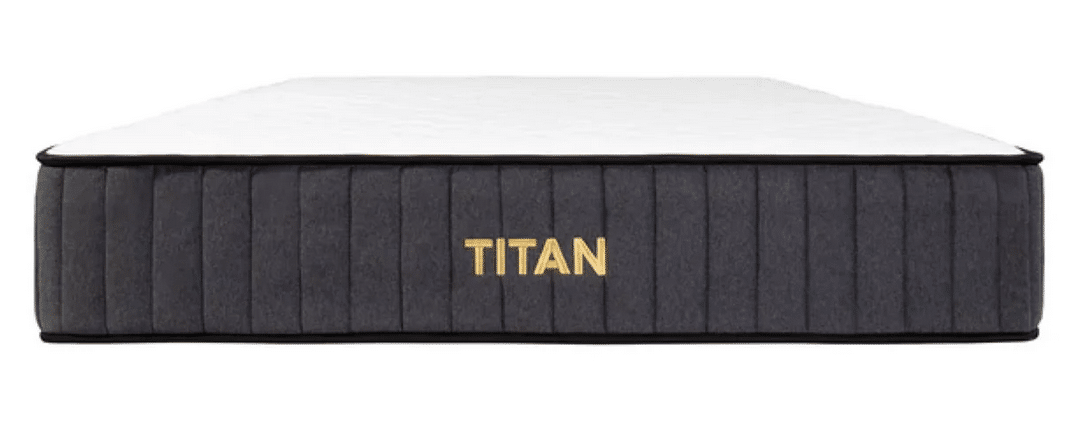
Most Comfortable Mattress for Heavy Sleepers
5. Helix Plus

Best Mattress for Backpain for Heavy Sleepers
6. Winkbed Plus
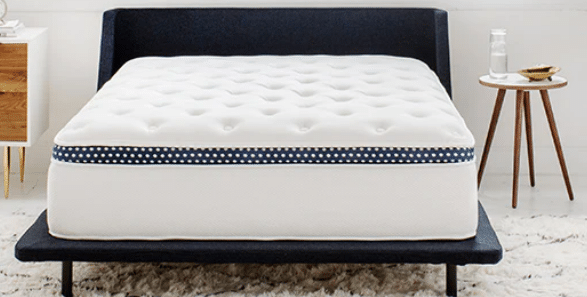
Best Mattress for Side Sleepers
7. Nolah Evo Comfort +
Best Mattress for Hip Pain for Heavy Sleepers
8. Bear Elite Hybrid
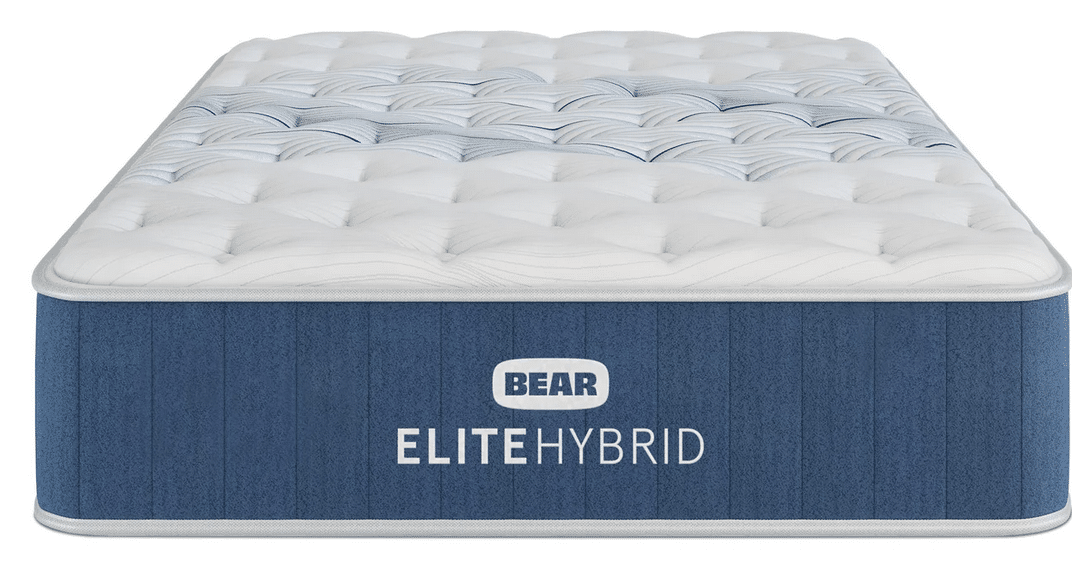
Finding The Mattress Best For You
Sleeping Positions
Side sleepers
Back sleepers
Stomach sleepers
Combo sleepers
Mattress Types
Memory foam
Latex
Innerspring
Hybrid
Mattress Thickness
Mattress Firmness
Edge Support
Sleep Trials, Returns, and Warranties
Frequently Asked Questions
What bed frames and foundations should I consider for my mattress?
How much should I spend?
Anything else to think about when buying a mattress?
Know What Mattress You Want Now?
Sarah Anderson, Certified Sleep Science Coach

